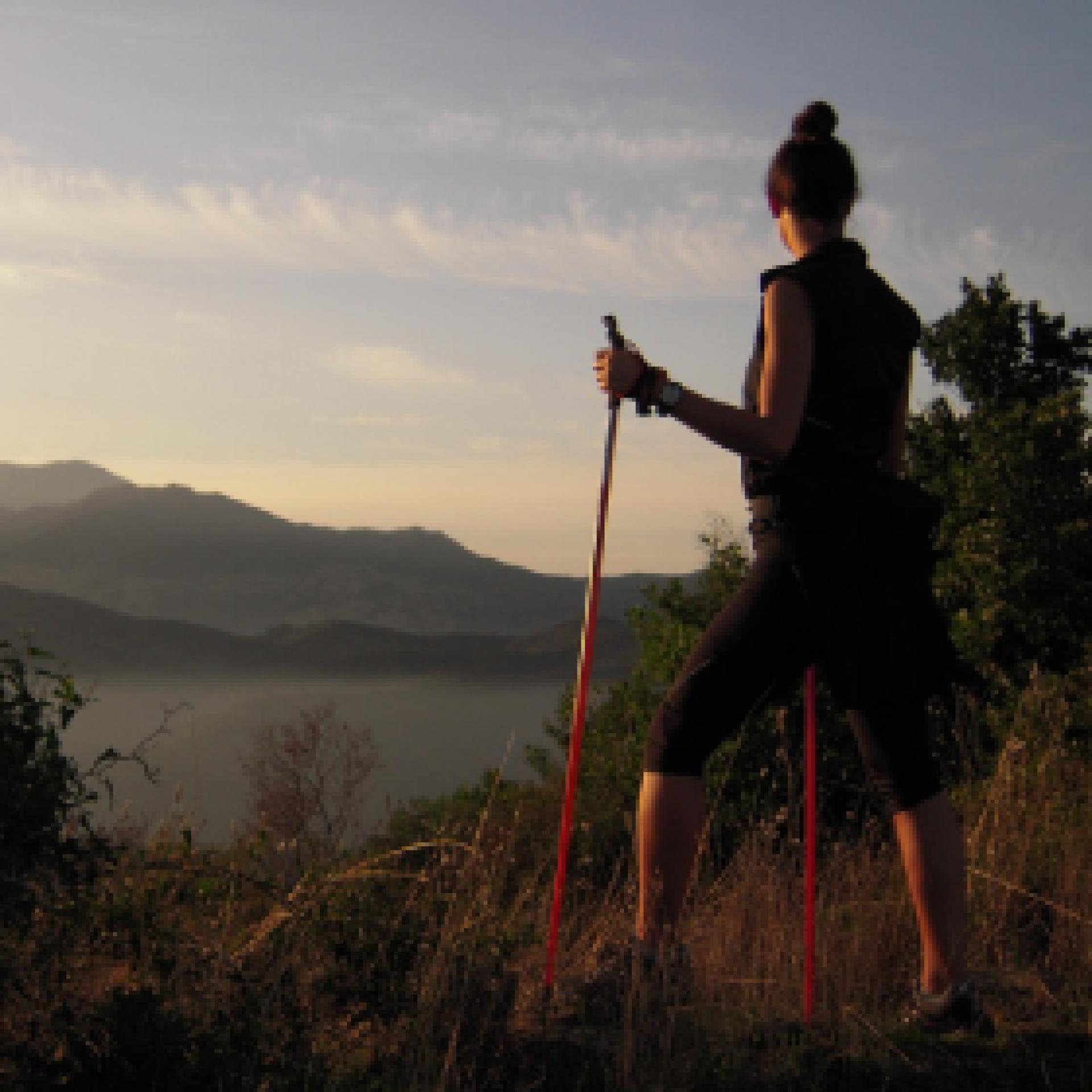Accesso
Il facile itinerario turistico che visita l’oasi di Mui Muscas si compone di un comodo anello da percorrere in bicicletta su facili sterrate e tratti asfaltati con scarso traffico.
Dal paese si prende la SS388, uscendo dal paese ed incontrando, subito dopo le ultime case, le indicazioni per l’oasi naturalistica, dove sono segnalate escursioni e un punto panoramico.
Si prosegue su strada asfaltata, seguendo sempre le indicazioni e cominciando a salire su una collina panoramica, affiancati da una bella sughereta e da una macchia evoluta ad erica e corbezzoli.
Mui Muscas
Quando la pendenza termina ci si trova nella zona di Mui Muscas, circondati dal bel parco comunale che occupa una vasta area a sugherete o a scarsi rimboschimenti. Si raggiungono alcune strutture attualmente in attesa di gestione: sulla destra, aperto e richiuso un cancello per il transito pedonale, sarebbero raggiungibili nel bosco alcune aree pic nic.
Si prende invece a sinistra subito prima delle strutture, percorrendo una strada sterrata. Sulla destra della strada, un cancello permette l’accesso al Parco degli Asinelli, una delle attrazioni più straordinarie di questa zona.
Gli asinelli
Il Parco degli Asinelli è nato a metà degli anni ‘90 per preservare la pura razza sarda, caratterizzata dal manto grigio, l’evidente croce nera sul groppone e da una taglia particolarmente minuta. Oggi il bel bosco ospita poco più di cinquanta esemplari e sono state attivate numerose collaborazioni e studi genetici e veterinari.
Si ritorna sulla sterrata, proseguendo ancora in direzione nordovest e cominciando gradualmente a scendere, seguendo sempre la strada maggiormente evidente. Giunti ad un grosso bivio si tiene la sinistra, salendo leggermente su un piccolo colle e poi scendendo ancora fino a un bivio dove si ritrova la strada asfaltata.
Seguendola a sinistra si torna presto al paese

